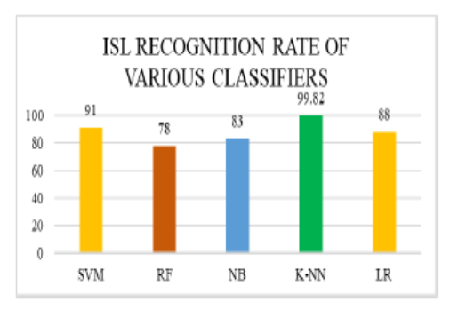


Indian Journal of Science and Technology
Year: 2024, Volume: 17, Issue: 7, Pages: 660-669
Original Article
B V Poornima1*, S Srinath1
1Department of CSE, SJCE, JSS Science and Technology University, Mysuru, Karnataka, India
*Corresponding Author
Email: [email protected]
Received Date:09 November 2023, Accepted Date:23 December 2023, Published Date:14 February 2024
Objectives: The objective of this paper is to introduce and demonstrate an innovative approach for the recognition of Indian sign language gestures, with a focus on bridging communication gap between the deaf and hearing communities. The goal is to contribute to the development of effective tools and technologies that facilitate seamless communication between individuals using sign language and the people with no knowledge about sign language. Methods: The methodology consists of three key steps. First, data pre-processing involves resizing and contours extraction. Next, feature extraction employs Fourier descriptors for frequency domain analysis and gray-level-co-occurrence matrix for spatial domain analysis. Finally, various machine learning models including SVM, Random Forest, Logistic Regression, K-Nearest Neighbor and Naive Bayes are trained on a standard dataset. Findings: In our controlled experimental setup, we applied a diverse set of machine learning classifiers to evaluate the proposed approach for gesture recognition. Among the classifiers tested, K-Nearest Neighbors demonstrated the highest accuracy, achieving 99.82%. To validate the robustness of our approach, we employed k-fold cross-validation with 5 folds. Novelty: This study presents an innovative method for sign language recognition by employing a dual-domain fusion strategy that prominently emphasizes the frequency domain. Through the integration of Fourier descriptors, the research conducts a detailed frequency domain analysis to characterize the contour shapes of sign language gestures. The synergy with gray-level co-occurrence matrix texture features in the spatial domain analysis, contributes to the creation of a comprehensive feature vector. The proposed approach ensures a thorough exploration of gesture features, there by advancing the precision and efficacy of sign language recognition.
Keywords: Indian Sign Language (ISL), Sign Language Recognition (SLR), Frequency domain, Spatial domain, Fourier descriptors, Gray level cooccurrence matrix (GLCM), K Fold
© 2024 Poornima & Srinath. This is an open-access article distributed under the terms of the Creative Commons Attribution License, which permits unrestricted use, distribution, and reproduction in any medium, provided the original author and source are credited. Published By Indian Society for Education and Environment (iSee)
Subscribe now for latest articles and news.